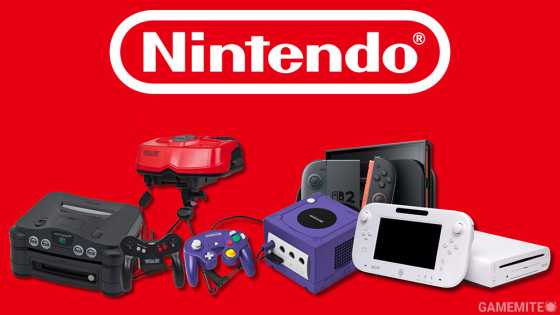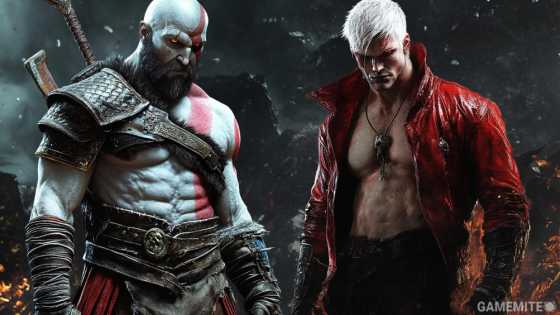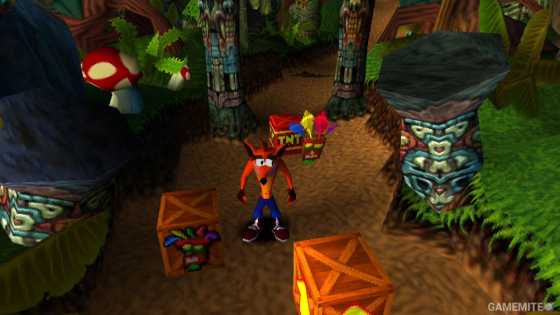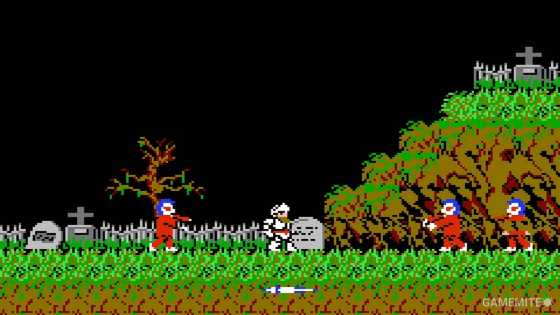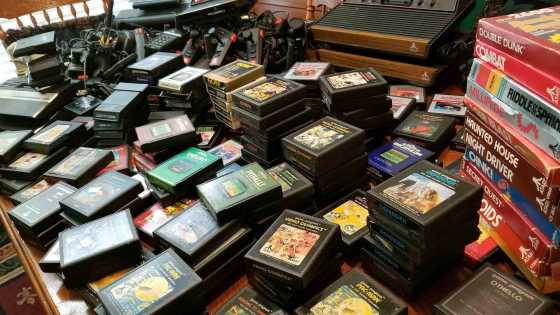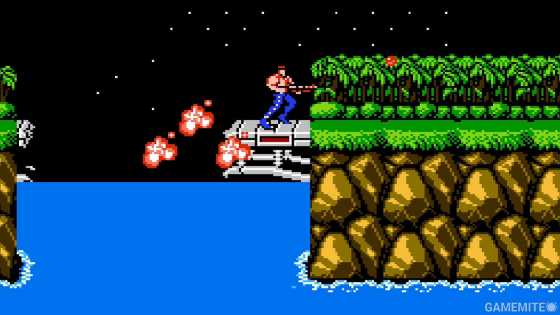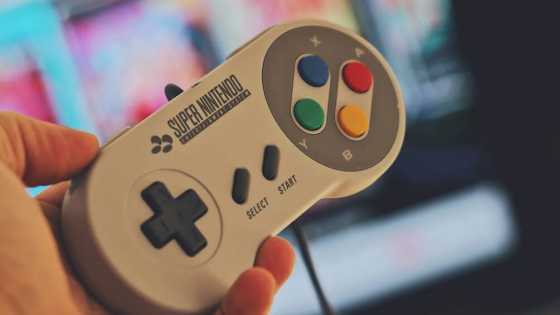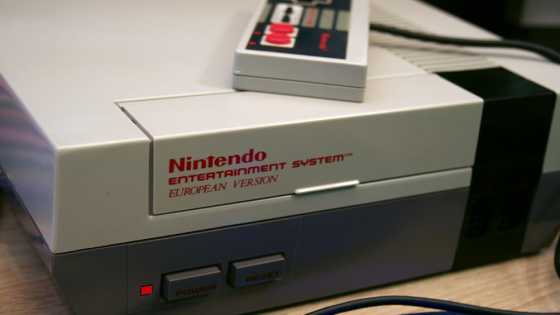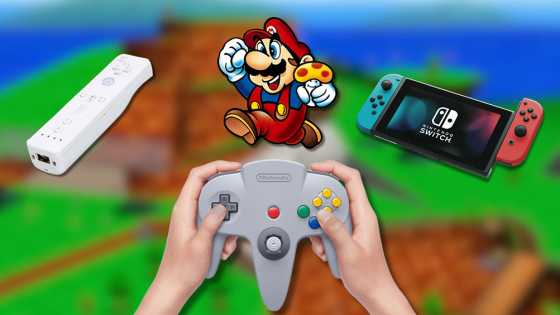Bubsy Came Back Twice, While These Retro Game Franchises Will Fade Into Obscurity
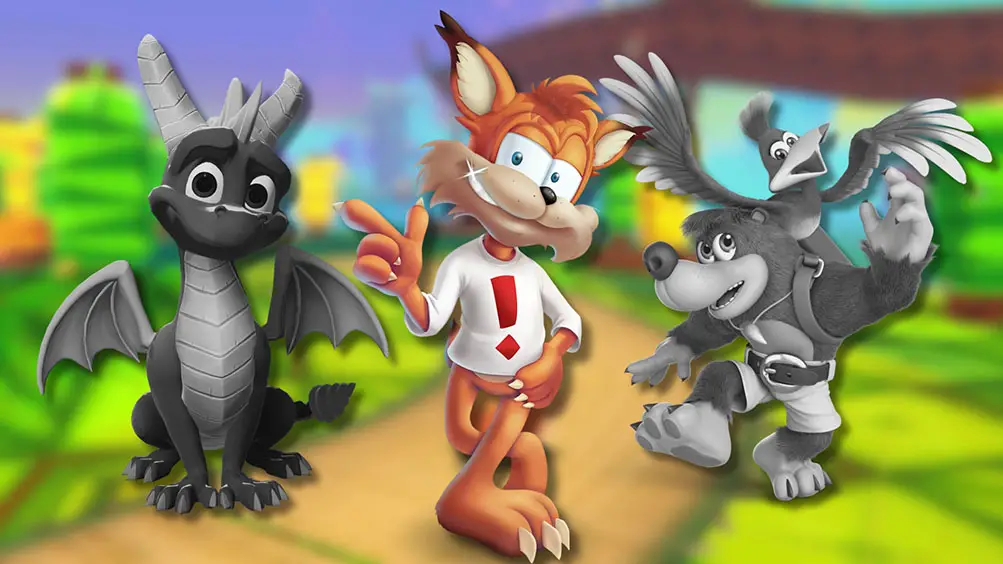
Bubsy 4D was recently revealed at Gamescom 2025, and its very existence has already made huge shockwaves throughout the entire gaming community. In case you weren’t aware, Bubsy is an infamous mascot platforming series that Accolade created in the 90s to try and emulate the success of Sonic the Hedgehog. Due to the bland design and exasperating personality of its titular character, combined with its horrible level design and its clunky controls, the Bubsy games are often considered some of the lowest points of the entire genre, with its sole 3D entry, Bubsy 3D, being cited as one of the worst video games ever made.
Despite the quality and reputation of this franchise, Bubsy came back in 2017, with a brand-new 2.5D game titled The Woolies Strike Back and a 2019 follow-up titled Paws on Fire!. But, just when people thought that was the last they’d see of this annoying bobcat, Bubsy 4D was announced and, to be completely honest, it looks surprisingly fun and polished. That’s right, this unpopular platforming mascot is still alive (somehow), and yet, other beloved retro franchises, like Banjo-Kazooie or Sly Cooper, have been dormant for literal decades. In this retrospective, we’ll take a look at some classic platforming IPs that deserve to come back much more than Bubsy.
Banjo-Kazooie
The Iconic Bear & Bird Duo Has Been Completely Forgotten By Microsoft
- Last Game: Banjo-Kazooie: Nuts & Bolts (Released in 2008)
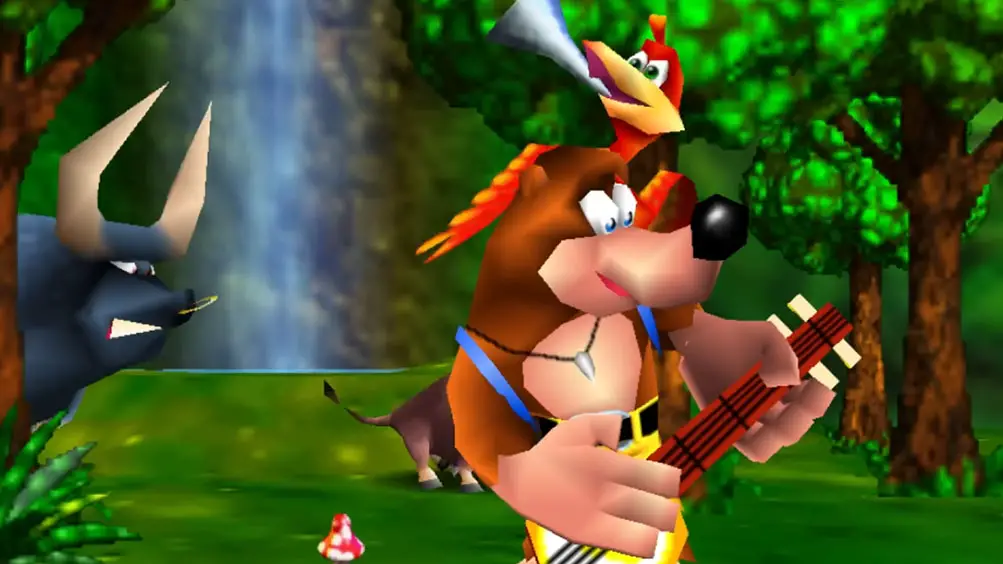
In 1996, Super Mario 64 completely revolutionized the entire industry, not only by using the Nintendo 64’s analog stick in ways that redefined how movement in video games would be designed from that point onwards, but also by basically creating what would become the 3D Collect-a-Thon subgenre. The success of Super Mario 64 inspired many other studios to create their own copycats, with one of them being Rare, a British studio that had already earned goodwill from Nintendo fans due to its work on the Donkey Kong Country series.
Rare had actually been working on a project titled Project Dream for many years, which shifted from a fantasy RPG for the SNES to a swashbuckling pirate adventure for the N64, until the studio finally landed on Banjo-Kazooie, a 3D Collect-a-Thon platformer starring a bear and bird duo that was directly inspired by an early version of Super Mario 64. The original Banjo-Kazooie was not only similar to Mario’s first 3D adventure, but it was even better in almost every conceivable way, with a more memorable soundtrack, more polished graphics, better level design, more power-ups & abilities for the titular characters, and even a very dry (but hilarious) sense of humor. This game was a critical and commercial success, and it cemented both Banjo and Kazooie as some of the very few platforming mascots on the N64 that could actually rival Mario.
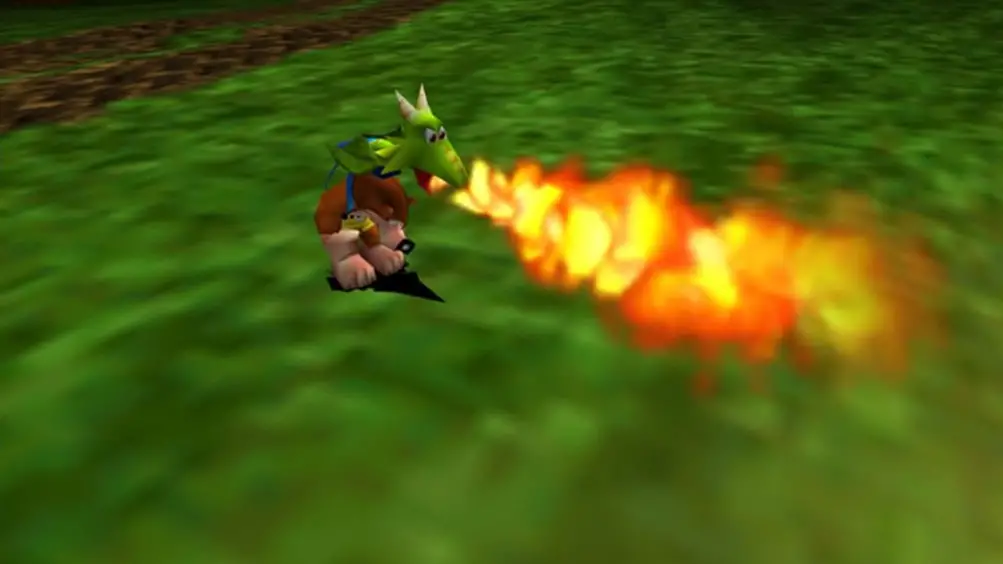
Rare kept developing many fun and colorful Nintendo 64 games throughout the late 90s and early 2000s, including Banjo-Tooie, a Banjo-Kazooie sequel that was bigger and more ambitious than its predecessor. But everything changed when Microsoft acquired the studio in 2002 and, by extension, gained ownership over all of its IPs. While Microsoft allowed Rare to develop a few Game Boy Advance spin-offs, like Grunty’s Revenge and Banjo Pilot, the iconic bear and bird duo wouldn’t return to home consoles until 2008, with the long-awaited release of their third mainline entry: Banjo-Kazooie: Nuts & Bolts. When this game was originally announced, fans were incredibly excited about the prospect of another 3D Collect-a-Thon adventure made with the hardware of the Xbox 360, but it ended up being a colossal disappointment.
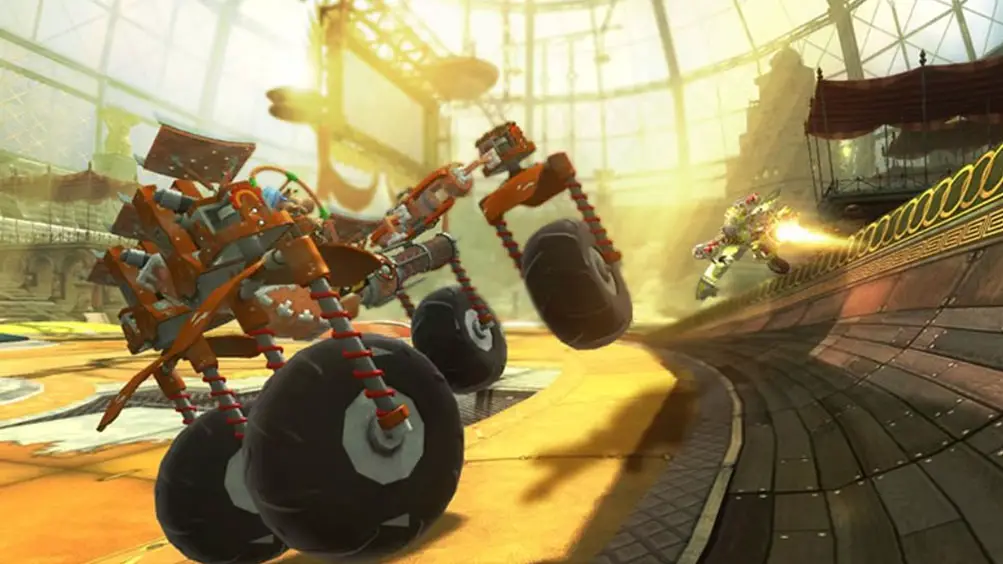
With a big focus on building toy-like vehicles and driving them through barren and empty overworlds, Nuts & Bolts was received quite poorly. It was far from a bad game, but it was not what longtime fans wanted from the third Banjo-Kazooie entry on home consoles. This title still is highly controversial and divisive among fans, as seen by its relatively low sales and review scores, and it’s often blamed for the sudden disappearance of this once-beloved IP. While there’s certainly some truth to that, it also just seems that Microsoft doesn’t have any faith in the franchise anymore and/or prefers to make Rare work in other types of games, like Kinect Sports or Sea of Thieves.
Banjo-Kazooie still has some sort of presence within the industry via compilations like Rare Replay or the addition of both N64 entries to the Nintendo Switch Online service, but fans have been asking for either a sequel or a remake for over a decade, and yet, neither idea has materialized yet. The sudden inclusion of Banjo and Kazooie as downloadable playable fighters in Super Smash Bros. Ultimate gave many fans hope that they would get a brand-new game in the near future, but this happened back in 2019 (over six years ago!), and the bear and bird duo still haven’t returned to the limelight.
Conker
- Last Game: Young Conker (Released in 2016)
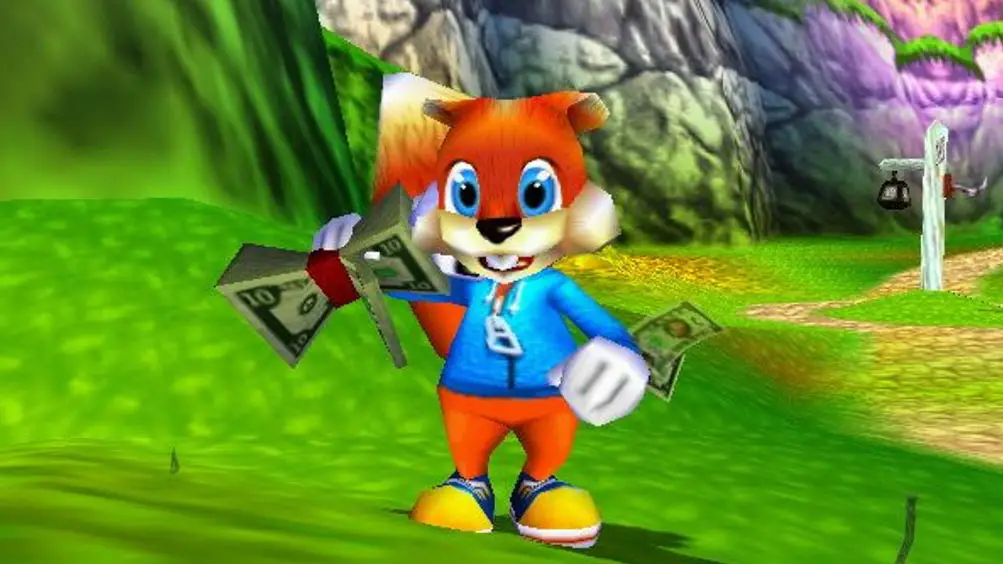
Like I previously mentioned, the 90s were full of colorful Collect-a-Thon 3D platformers in every corner, to the point of oversaturation. So, Rare took advantage of the situation and created a new one with an adult audience in mind that would actually serve as a parody of the genre the studio had helped popularize in the first place. This intriguing new project originally began its life as another generic 3D platformer for kids titled Twelve Tales: Conker 64, but it slowly shifted into a more mature title with raunchy humor and a lot of graphic violence, just because the developers at Rare really wanted to make something that would stand out from their other games.
The final result was Conker's Bad Fur Day, which quickly became a cult classic due to all the aforementioned adult elements that most people weren’t expecting in a 3D platformer for the Nintendo 64. This was technically not the red squirrel’s first adventure, as he also appeared in 1997’s Diddy Kong Racing and 1999’s Conker's Pocket Tales, but this was the game that turned Conker into an icon and helped him become one of Rare’s most beloved characters. However, he immediately suffered a really unfortunate fate, as Microsoft bought the studio a little over a year after the release of Bad Fur Day. Furthermore, in 2005 (just four years later), Microsoft and Rare released Conker: Live & Reloaded, an Xbox 360 remake of the previous N64 entry. Naturally, this game looked absolutely beautiful and was praised for its detailed graphics that were really impressive for the time, but it was also heavily criticized for censoring all the obscenities in its dialogue, which pretty much defeated the point of the game and made it almost unplayable for most fans.
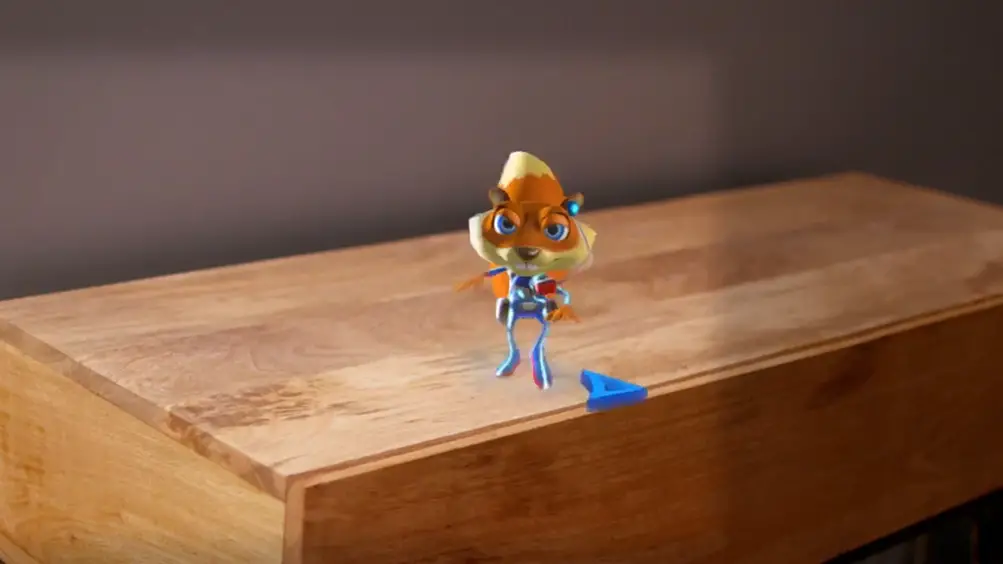
The divisive reception of Live & Reloaded pretty much sealed Conker’s fate because, from that point onwards, Microsoft kept repeatedly mishandling the IP, and it slowly became evident that it had absolutely no idea what to do with it. In 2014, everyone was shocked when Conker suddenly appeared at the end of a trailer for Project Spark and directly told the audience that “after ten years without a new game, he’ll have to make one of his own”. Yes, Project Spark was not a new Conker game, but a game creation tool (similar to Dreams or Game Builder Garage) that featured an episodic campaign based on Rare’s IP titled Conker's Big Reunion. The idea of Microsoft using the raunchy red squirrel to promote this game left a bad taste in most people’s mouths, and to make things even worse, the Project Spark online servers were shut down in 2016, which proved that (despite its admittedly impressive ambition) this game couldn’t even be saved by Conker’s presence.
And that’s not all, because in 2016, Microsoft released Young Conker, a techdemo/small game for the Microsoft HoloLens. This weird project was absolutely destroyed by fans and critics alike, not only because it lacked the adult sense of humor that had made Conker such a recognizable IP, but also because the design of the titular character looked absolutely hideous and unappealing. Unfortunately, this was the last the public saw of Conker out in the wild, with the exception of 2015’s Rare Replay; he hasn’t appeared in a video game ever since. Not only is it extremely frustrating that Microsoft has completely mishandled what should have become a really distinct and interesting IP, but it’s also quite tragic that he only really had one successful video game before he faded into obscurity. Conker truly deserves a second chance.
Spyro The Dragon
Crash Bandicoot’s Purple Dragon Friend Is In Dire Need Of A Brand-New Game
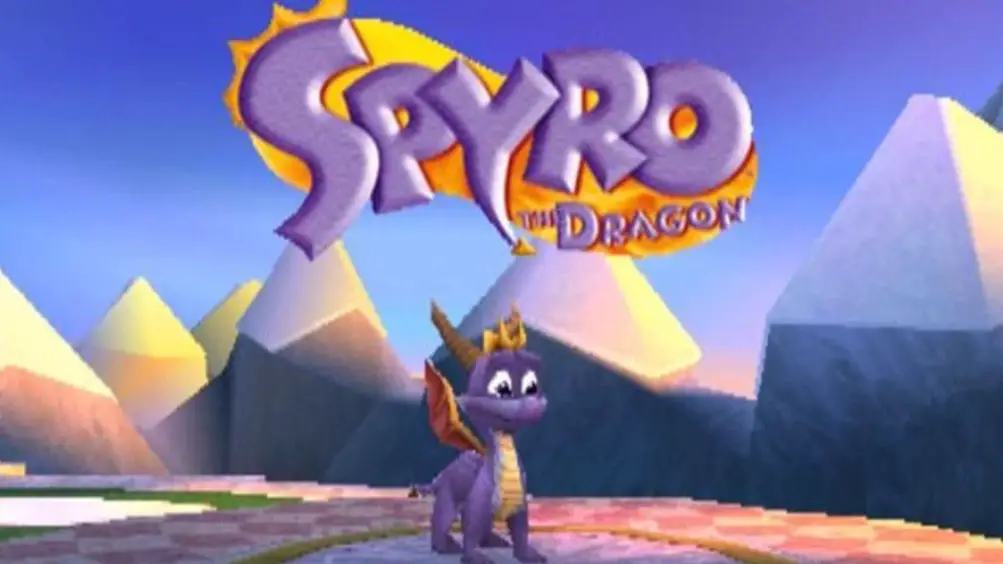
- Last Game: Spyro Reignited Trilogy (Released in 2018)
Crash Bandicoot and Spyro the Dragon were the unofficial mascots of the original PlayStation, which makes sense considering the development studios behind them (Naughty Dog and Insomniac Games, respectively) had their offices in the same building during the 90s. It’s a real shame that both of these IPs have shared the same long and complicated legal history, which includes their rights hopping from company to company throughout the 2000s and 2010s. In the case of Spyro, this little purple dragon made an impact on PS1 consumers because his early games were a lot more open and less linear than Crash’s: they were basically the console’s answer to Banjo-Kazooie.
After three successful and influential PS1 entries, Insomniac Games went on to develop the Ratchet & Clank series for PlayStation 2, while Spyro was left in the hands of other studios. The series’ PS2 era had many lows (like 2002’s Enter the Dragonfly) and some interesting highs (like 2004’s A Hero’s Tail), but it was often overshadowed by other popular platforming icons during this decade, like Sly Cooper, Jak & Daxter, and, ironically enough, Ratchet & Clank. Additionally, the entire Spyro series was rebooted in 2006, with the release of The Legend of Spyro: A New Beginning. This reboot kick-started the Legend of Spyro sub-series, which was meant to be more serious and mature fantasy adventures. The Legend of Spyro trilogy had a moderate level of success, but it didn’t resonate with audiences as much as the original PS1 trilogy did back in the late 90s.
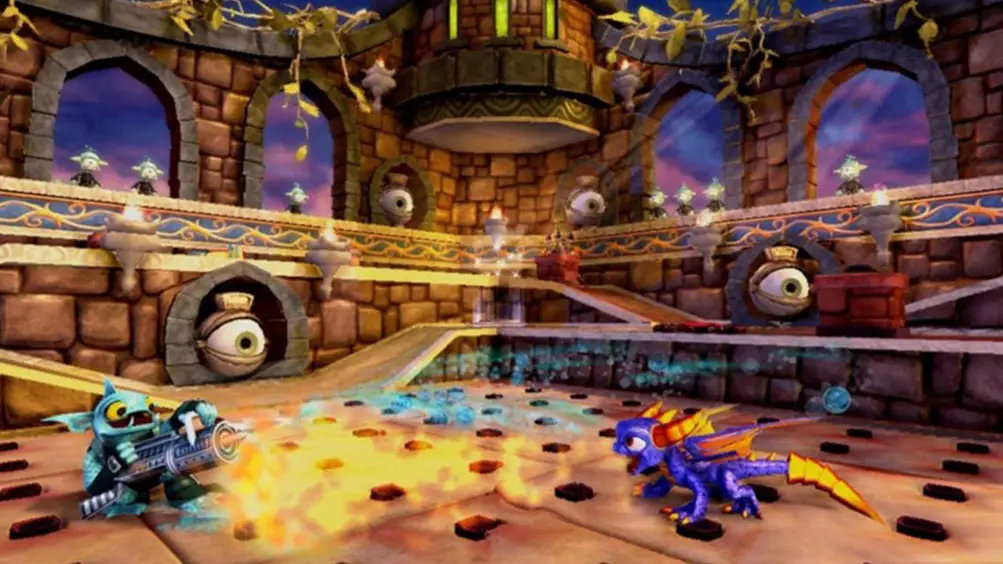
But fans are still horrified by the worst thing that ever happened to this franchise: the Skylanders series. Shortly after Activision acquired the rights to both Crash Bandicoot and Spyro in 2008, Toys for Bob was given the opportunity to revive an IP, and it chose the little purple dragon, while also implementing a brand-new cutting-edge technology that allowed physical toys to come to life inside a digital world. This led to the creation of the Skylanders series, which basically created the toys-to-life subgenre. All of this sounded good on paper, but the new Spyro design chosen to become the face of this new franchise is still highly disliked by fans to this day and is considered one of the worst redesigns in gaming history. To no one’s surprise, Skylanders: Spyro's Adventure and all of its sequels were huge commercial successes that allowed Activision to sell thousands of game units and physical toys at the same time. This also tragically meant that Skylanders became its own thing and Spyro was slowly left by the wayside, forgotten by most people.
The positive reception and excellent sales of Crash Bandicoot N. Sane Trilogy (a modern remake of the first three Crash games) inspired Activision to greenlight a similar project that would remake the original PS1 Spyro games but with modern HD graphics. The final result was 2018’s Spyro Reignited Trilogy, which sold and reviewed extremely well, while also giving longtime fans hope that the purple little dragon was finally back into the mainstream. However, what happened next was extremely odd and has left the entire fan base dumbfounded to this day. In the late 2010s and early 2020s, Crash Bandicoot received another remake and two brand-new games, including the long-awaited Crash Bandicoot 4: It's About Time, an original entry for home consoles that utilized the formula from the classic PS1 trilogy while ignoring all titles that came after it. Naturally, fans saw this as a hint that Spyro was going to receive the same treatment next, since, after all, he had gotten a remake trilogy shortly after the orange marsupial. Sadly, it has been five years since It’s About Time came out (and seven since Reignited Trilogy came out), and there still isn’t any news of a hypothetical Spyro the Dragon 4. Fans are growing more and more desperate each day, and to make things even worse, it has recently been discovered that Activision quietly canceled a Crash Bandicoot 5 that would have been a crossover with the Spyro franchise.
Ape Escape
Everybody Wants To Capture Whacky Monkeys On Modern Hardware
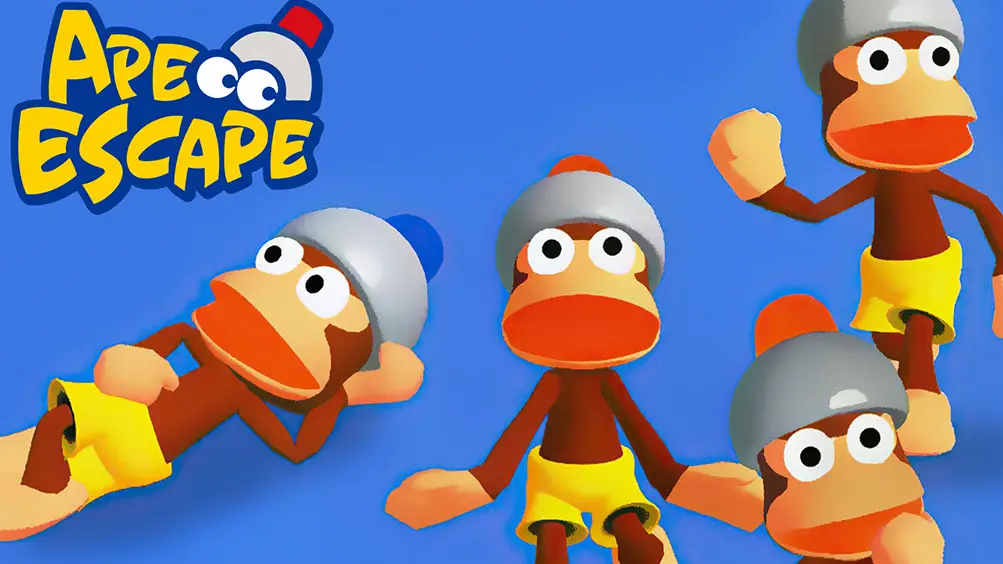
- Last Game: PlayStation Move Ape Escape (Released in 2010)
After the success of Super Mario 64 and the impact the N64’s analog stick had, Sony knew that it was falling behind its main rival, so its engineers quickly began working on a new PlayStation controller with similar dual analog sticks called the DualShock Controller. Shortly before its release, Sony showed it to a small team of twenty-five developers who were already working on a new PS1 game, and they all quickly began thinking of ways they could implement its analog sticks into its gameplay.
The final result was Ape Escape, the very first PS1 exclusive that specifically required the use of the DualShock controller for its gameplay. The main character, Spike, can use a collection of gadgets to catch a bunch of whacky Pipo Monkeys - like a Stun Club, a Time Net, an R.C. Car, and many more - and the player has to control all of them with the right analog stick of the DualShock controller, while Spike moves around with the left one. This was really ambitious for its time, and it made the gameplay of Ape Escape feel a lot more intuitive and dynamic. Even though most people nowadays associate the PS1 with Crash and Spyro, Ape Escape was yet another major hit and one of the console’s best 3D platformers, and even the Pipo Monkeys themselves became massive icons of the gaming industry, especially in their home country of Japan), as they would proceed to have cameo appearances in multiple other video games from other franchises.
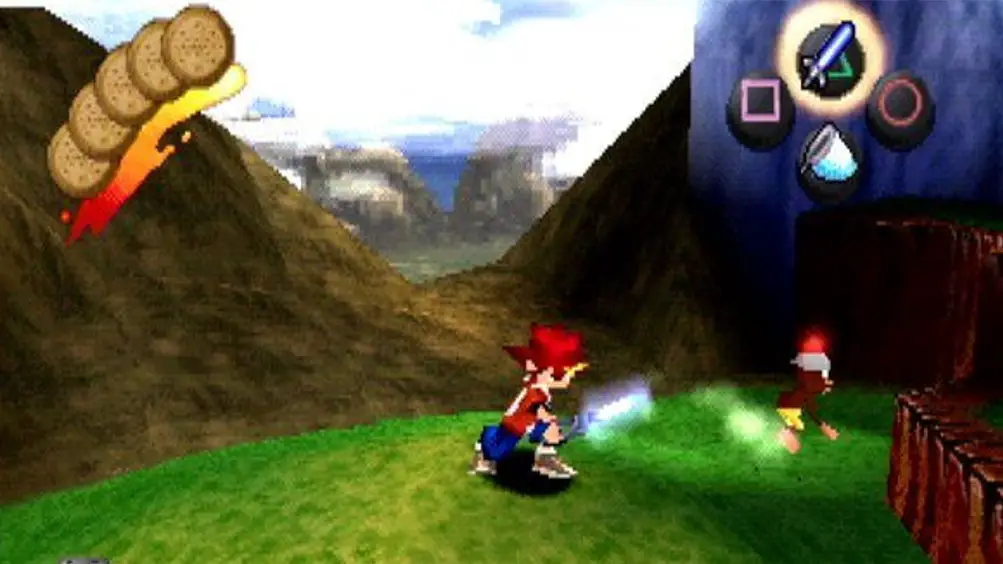
Ape Escape 1 was followed up by the other two mainline entries that released on PlayStation 2: Ape Escape 2 and Ape Escape 3, and both of them were even better than the original PS1 classic, with better graphics, new and inventive gadgets, and even whackier types of Pico Monkeys to find and catch. And that’s not even accounting for all the other spin-off titles that came out during the 2000s, like Ape Escape: Pumped & Primed or Ape Academy. Unfortunately, while the series was still doing relatively well during this era, it was clearly being overshadowed by other exclusive PS2 platformers, like Ratchet and Clank or Jak and Daxter, so it slowly began losing steam as the 2010s approached.
Sony really enjoyed using the Ape Escape IP and the Pipo Monkeys in general to test and promote new hardware, as they were the stars of EyeToy: Monkey Mania, a PS2 game that required the webcam known as the EyeToy, and PlayStation Move Ape Escape, a PS3 game that utilized the motion-controlled properties of the PlayStation Move. Weirdly enough, this was the last game in the series that Sony has ever released, and there hasn’t been another full Ape Escape game ever since. It’s very hard to pinpoint exactly why Ape Escape failed to catch on during the 2000s and 2010s, but fans have come up with many reasonable theories: it’s possible that the overexposure to the Pipo Monkeys (especially when they were used to promote hardware) made audiences see them as mere marketing mascots and not “real” video game characters. Maybe it’s because they resonated more with Japanese audiences than with Western audiences, so Sony prioritized other similar IPs with more worldwide appeal, like Ratchet and Clank or LittleBigPlanet. Some people even blame Sony’s (and the entire gaming industry’s) reluctance to make goofy and colorful games at the start of the seventh generation, as most publishers and developers at the time preferred to release dark, gritty, and realistic games.
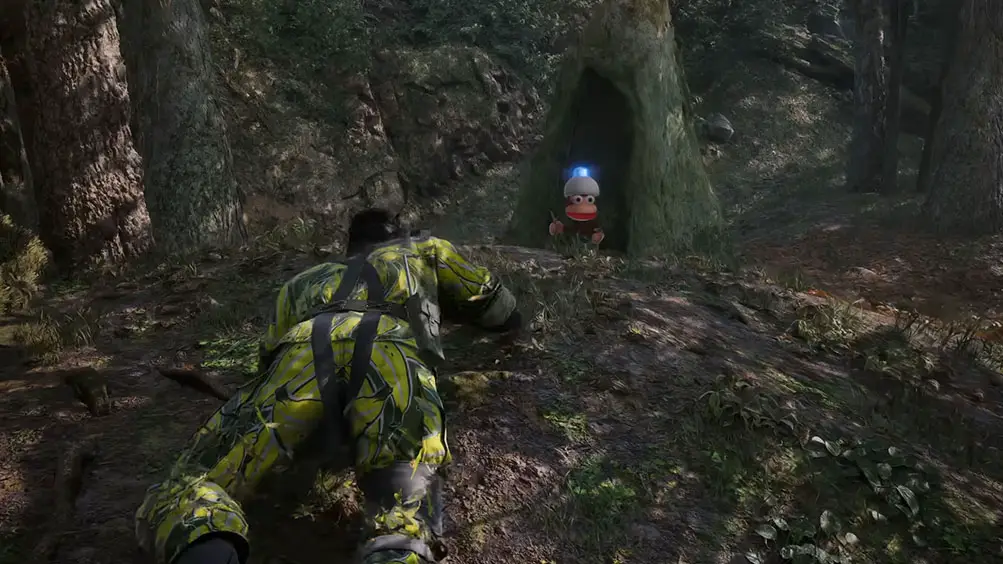
Whatever the reason for Ape Escape’s disappearance is, there’s a fact nobody can deny: people love the Pipo Monkeys, and they want to play another game in this classic series. Sony has kept the franchise alive by including its characters in many of its exclusives, like when Spike appeared as a playable fighter in PlayStation All-Stars Battle Royale or when the Pipo Monkeys’ helmet was included in Tokyo Jungle as a free DLC item. But not only was the iconography of the series kept alive in recent years, its unique gameplay style is still being experienced and enjoyed by many to this day. There’s an entire Ape Escape level in Astro Bot, and the recent Metal Gear Solid 3 remake, Metal Gear Solid Delta, brought back the Snake vs. Monkey mode from the original PS2 release. That’s right, two different critically acclaimed video games from the past two years have had special Ape Escape modes/levels in them, and they were both received very positively by players. This is a very clear sign that Sony should revive the franchise in the near future, because there’s clearly a large audience interested in it.
Jak And Daxter
Sony And Naughty Dog Have Completely Forgotten About This Classic Franchise From The PS2 Era
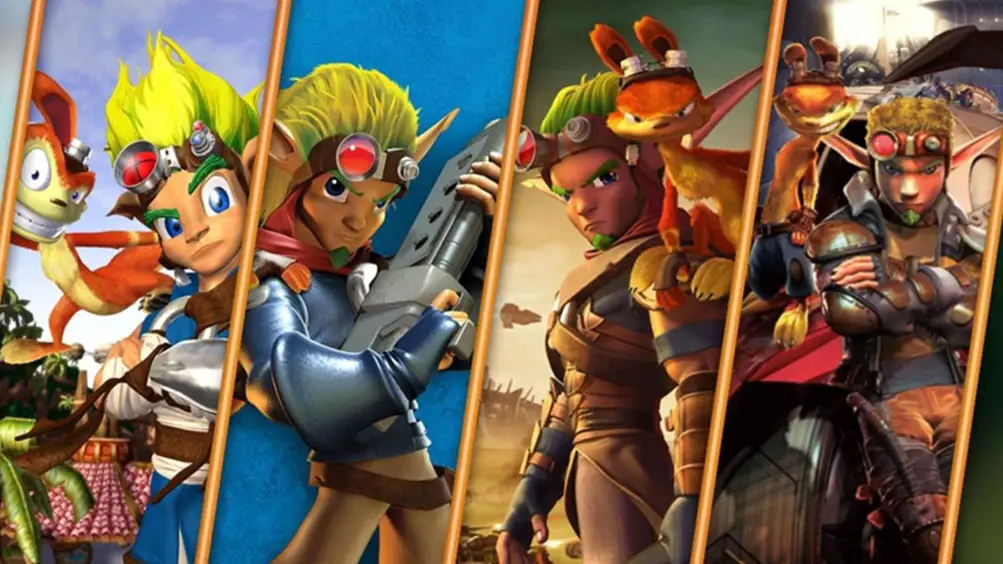
- Last Game: Jak and Daxter Collection (Released in 2013)
The sixth console generation was a great time for fans of the 3D platformer genre, as three beloved studios that had gained experience with these types of games during the 90s got the chance to make three brand-new platforming mascots whose games were 100% exclusive to Sony’s PlayStation 2. These studios were Insomniac Games, Naughty Dog and Sucker Punch Studios, who created Ratchet and Clank, Jak and Daxter and Sly Cooper respectively, a trifecta of excellent and revolutionary 3D platformers that pretty much became synonymous with the PS2, but sadly only Ratchet and Clank seem to still be relevant today, whereas the other the two were slowly forgotten by both Sony and their developers.
Let’s start with the most forgotten one of the two: Jak and Daxter, which was created and developed by Naughty Dog shortly after the success of the Crash Bandicoot franchise on PS1. The first game in the series, The Precursor Legacy, was a masterpiece of the 3D Collect-A-Thon genre, as it felt like the culmination of everything the studio had learned by making Crash Bandicoot, but translated to bigger and more open freeroaming levels inspired by the likes of Banjo-Kazooie and The Legend of Zelda. Needless to say, Jak and Daxter: The Precursor Legacy was received extremely well and quickly became one of the best PS2 exclusives of all time.
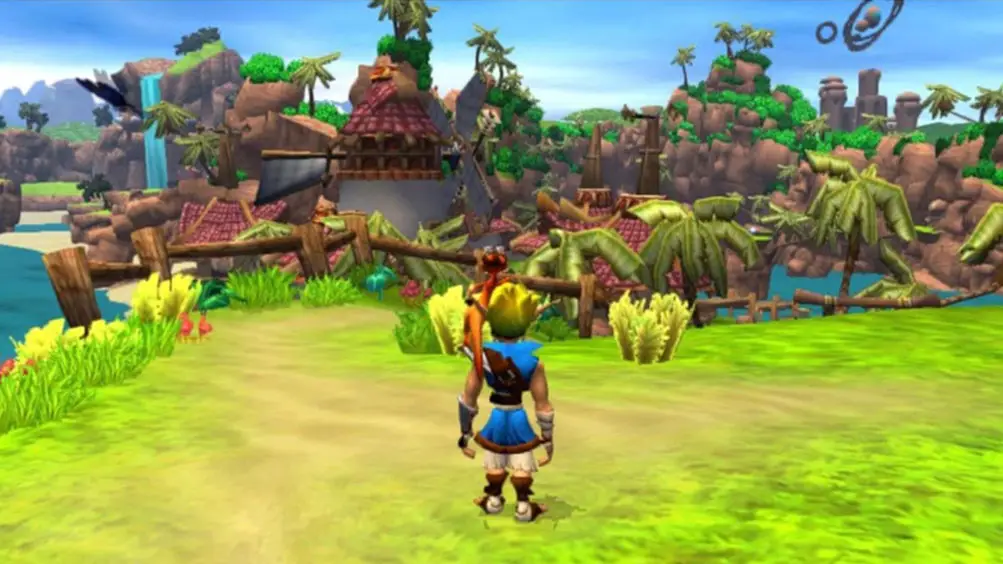
But everything changed when its direct sequel, Jak 2, came out two years later. Naughty Dog noticed the growing popularity of gritty and realistic open-world games like Grand Theft Auto 3 during the early 2000s, so its developers decided to completely change the tone of the Jak and Daxter sequel they were working in order to fit the preferences of its demographic, which was mostly made up of kids who were growing into teenagers. As a result, Jak 2 was more of an action-adventure game with a few platforming elements, a bigger focus on guns and vehicles, a vast open world, and a more mature story. While this sudden change was quite jarring, it was the right call from Naughty Dog, as Jak 2 was also received very well and greatly resonated with its newfound audience. This success led to a third entry titled Jak 3, which polished and/or fixed many of its predecessor’s flaws and, as a result, is often considered the best one in the entire trilogy.
Shortly after that, Naughty Dog made its last Jak and Daxter game: Jak X: Combat Evolved, a racing spin-off that felt like a natural transition for the franchise, seeing as Jak 2 and Jak 3 focused so heavily on vehicles and vehicular combat (Not to mention that the studio’s final Crash Bandicoot game was also a racing spin-off, so history was repeating itself). In 2009, another studio called High Impact Games took the reins of the franchise because Naughty Dog was busy with the first Uncharted game. This resulted in Jak and Daxter: The Lost Frontier, a strange platforming spin-off that felt more similar to The Precursor Legacy, but it was panned by fans who felt like it didn’t capture what had made the franchise so special in the first place.
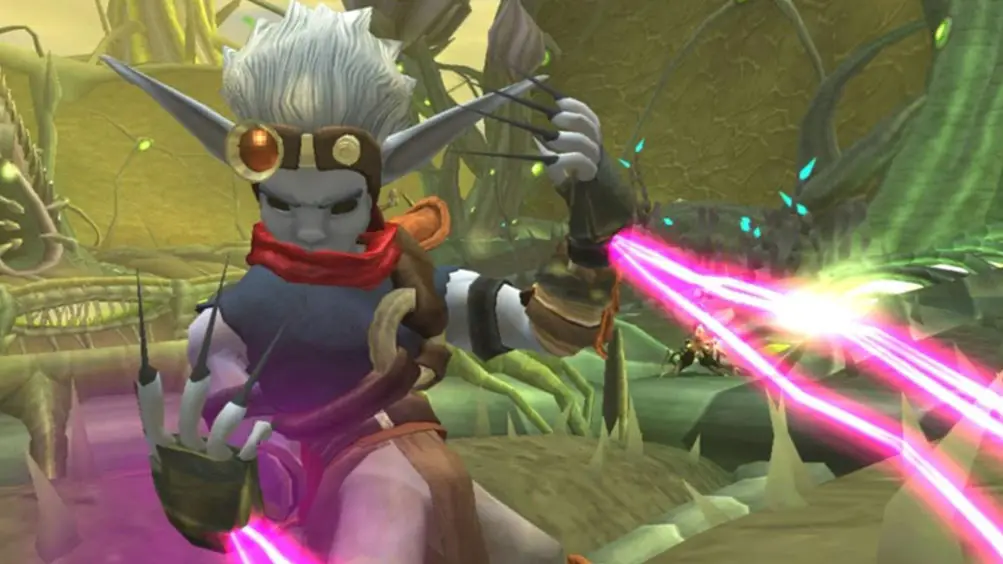
The last time Jak and Daxter starred in a video game of their own was in 2013’s Jak and Daxter Collection, a collection of remastered ports of the original PS2 trilogy for PlayStation 3. Weirdly enough, that’s where the history of this beloved duo of platforming mascots comes to an abrupt close. Aside from a few minor appearances in other Sony titles like PlayStation All-Stars Battle Royale or Astro Bot, both Jak and Daxter have completely disappeared from the modern gaming landscape. Apparently, Naughty Dog considered making a fourth entry around 2013, but ended up abandoning the project because the developers felt like it “would do everybody a disservice” and that the company couldn’t “create the game that fans wanted at the time”.
When compared to other retro franchises on this list, Jak and Daxter is in a very strange position, because there’s no real reason for its disappearance; it just seems that neither Naughty Dog nor Sony is interested in bringing it back. The studio has moved on to bigger and more ambitious projects, like Uncharted, The Last of Us or Intergalactic, while Sony barely publishes platformers nowadays, although the unexpected success of Astro Bot in 2024 may have inspired it to greenlight more projects in this genre in the near future, and Jak and Daxter could be one of the lucky candidates the company will choose to bring back.
Sly Cooper
This Beloved Raccoon Thief Has Been Stuck In Ancient Egypt For 12 Years!
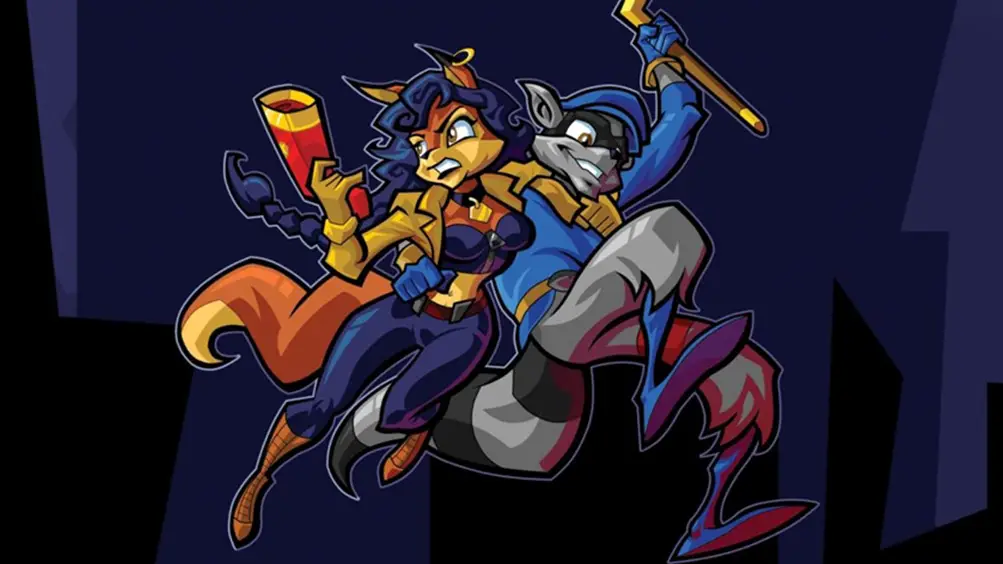
- Last Game: Sly Cooper: Thieves in Time (Released in 2013)
The other platforming franchise that thrived during the 2000s and became one of the unofficial mascots of the PS2 (alongside Ratchet and Clank and Jak and Daxter) is none other than Sly Cooper. Developed by Sucker Punch Productions, this series stood out from its contemporaries by implementing a lot of stealth mechanics into its platforming gameplay, thus turning it into a bizarre but refreshing blend of genres that became a massive hit among PS2 consumers. But, of course, its colorful graphics, charming animated cutscenes, and lovable characters are also part of the reason the Sly Cooper franchise gained such a big following.
The first entry in the series, Sly Cooper and the Thievius Raccoonus, was a lot of fun, but its two direct sequels - Sly 2: Band of Thieves and Sly 3: Honor Among Thieves – were even better in every single way. Just like Ratchet and Clank and Jak and Daxter, the Sly Cooper games ended up forming a trilogy of three excellent 3D platformers that anyone who owned a PS2 could enjoy. This franchise didn’t get any spin-offs during this console generation, but it did get a fourth entry in the very next one, although it was developed by an entirely different studio. After all, Sucker Punch Productions had moved on to the Infamous series during the PS3 era, since its developers wanted to make something more “brazen and loud” after completing the Sly Cooper trilogy.
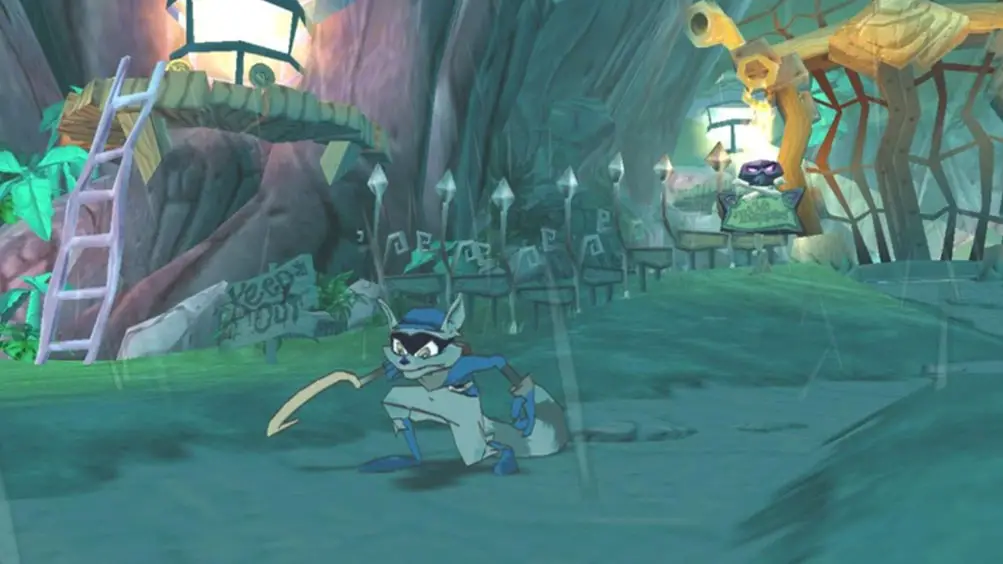
Around that time, a studio known as Sanzaru Games was interested in making a new Sly Cooper game for the PS3, so its developers made a prototype that impressed Sony so much that they were hired to make a remastered port of the original PS2 trilogy titled The Sly Collection. Once that project was completed, Sony green-lit a new game, which eventually turned into what we know today as Sly Cooper: Thieves in Time. This whacky time-traveling adventure marked the long-awaited return of the franchise after eight long years and successfully readapted everything that had made the original games so special with the advanced graphical capabilities of the PS3. Nevertheless, despite its critical success, Thieves in Time is often considered the “black sheep” of the franchise. Don’t get me wrong, this is actually a great game and a solid entry into the Sly Cooper series, but many fans are not too fond of its weird writing, its questionable narrative decisions, and its slippery control scheme. To make things even worse, it also didn’t sell well, with less than a million units sold, despite releasing on both PS3 and PlayStation Vita. The story of Thieves in Time concludes with Sly himself waking up in Ancient Egypt after the final battle, which basically hints at the possibility of a direct sequel in which the other characters would have to travel back in time to rescue him, but, unfortunately, this never materialized, and the Sly Cooper franchise has been dormant ever since.
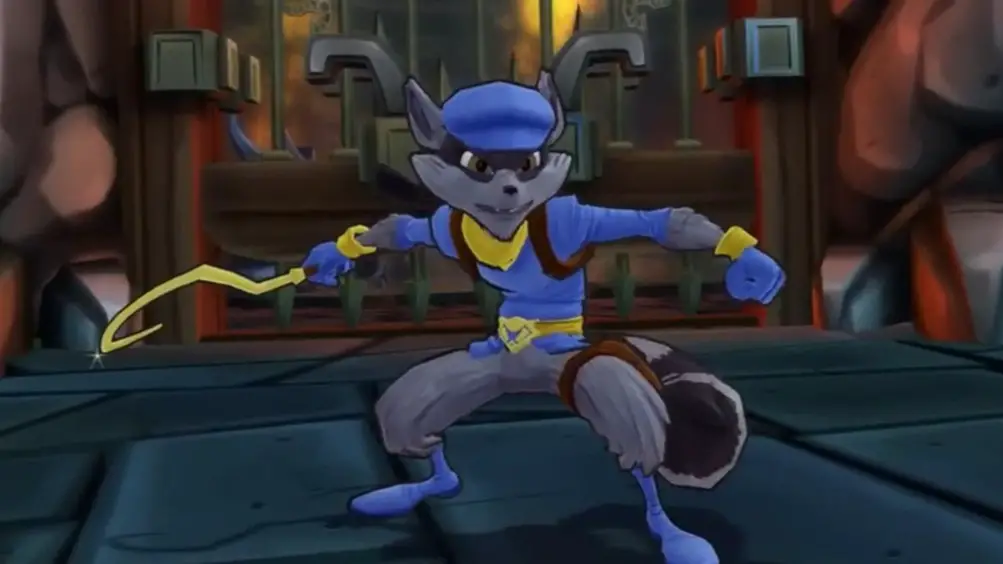
But this story isn’t over, since there was another (bizarre) development: the announcement of an animated Sly Cooper theatrical film in 2014, complete with a full-fledged trailer that actually looked quite good. This made a lot of sense at the time, seeing as this movie was being produced by Rainmaker Entertainment, the same studio that was working on the Ratchet and Clank movie that had been announced the previous year. However, both Sony and Rainmaker went silent and haven’t revealed any more information about this project ever since. Weirdly enough, Sony went on to announce a Sly Cooper animated series in 2017, but it’s not entirely clear whether that’s what the aforementioned movie has evolved into, or if it’s an entirely different project.
Nevertheless, it’s safe to say that Sly Cooper is in a very weird and unfortunate position right now. Jak and Daxter has been dormant because it doesn’t seem like its developers or its publishers are interested in making a new game, but the divisive reception and low sales of Thieves in Time seem to have completely discouraged Sony from making new games in the Sly Cooper franchise. There’s a little bit of hope on the horizon, however, because if that film or that TV show ends up releasing someday, they have the potential to breathe new life into the IP and inspire Sony to finally greenlight its long-awaited fifth mainline entry.
Rayman
Ubisoft Doesn’t Really Care About The Mascot That Put It On The Map Anymore
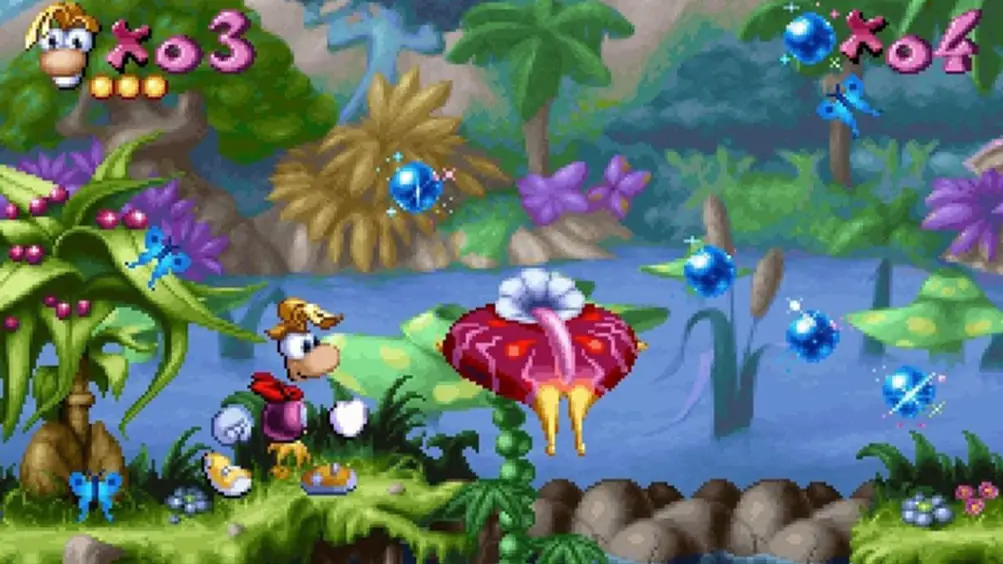
- Last Game: Rayman Legends (Released in 2013)
The history of Rayman is nothing short of fascinating, albeit quite tragic and unfortunate as well. It all started in the early 90s, when Ubi Soft (that was the company’s name at the time) animator and designer Michel Ancel took a character he had created during his teenage years and, after some encouragement from the Guillemot brothers, decided to turn him into the protagonist of a brand-new 2D platformer. The final result was Rayman, which was endlessly praised for its detailed 2D animations, its unique and whimsical characters, and its challenging platforming gameplay. This was a very solid start for the IP, but it wouldn’t reach legendary status until the release of its direct sequel, Rayman 2: The Great Escape, an incredibly charming and ambitious project, and the series' first foray into the world of 3D gaming.
Rayman 2 was such a massive critical and commercial success that not only is it often considered one of the best video games of the fifth generation, but it was also ported to an extensive number of other consoles, like the PS2, the Nintendo DS, the Nintendo 3DS, and smartphones. The Rayman franchise had gained a lot of momentum, and it showed no signs of stopping, as Ubisoft released a third entry in 2003, titled Rayman 3: Hoodlum Havoc. This game was equally as great as its predecessor and finally cemented the IP and the character as pillars of the platforming genre. Ubisoft is arguably the biggest European video game company out there and, while it successfully made a name by itself over the past three decades with many high-quality and influential releases, it’s safe to say that most gamers heard this name for the first time when they played a Rayman title when they were younger, and this bizarre but charming limbless hero became the company’s unofficial mascot.
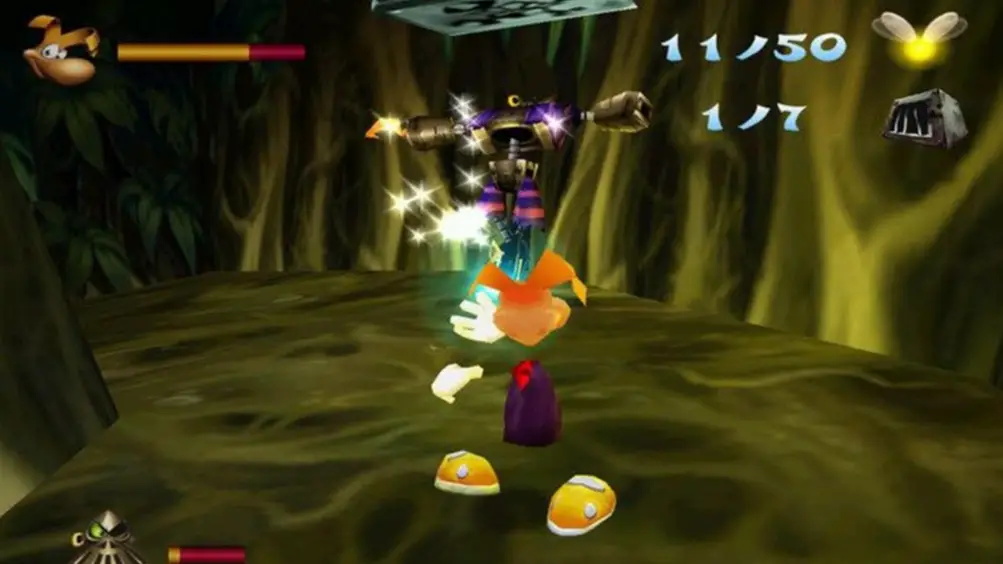
Everything changed in 2006, however, with the release of Rayman Raving Rabbids. This spin-off is basically a party game/mini-game collection (similar to Mario Party or Crash Bash) that also marked the debut of the titular Rabbids, a bunch of weird and over-the-top rabbit-like creatures that Rayman has to confront in order to rescue his friend. While this initially seemed like a simple and inoffensive party game, it sealed the limbless hero’s fate forever: it seems like the Rabbids resonated with audiences a lot, because they fit perfectly with the “random” humor of the late 2000s and early 2010s. The commercial success of Rayman Raving Rabbids led to the creation of the Rabbids franchise, as these bizarre (and admittedly, annoying) creatures went on to star in their own video games, and they slowly began overshadowing Rayman himself, the star (and titular character) of the franchise they originally belonged to.
The most tragic part of this story is that Rayman Raving Rabbids was originally going to be Rayman 4, and its concept art looked very promising, but the higher-ups at Ubisoft shut down the idea because they were worried the game would underperform for being a 3D platformer, and encouraged the team to shift genres. For over five years, Rayman was completely forgotten by Ubisoft, as the company focused on publishing more and more Rabbids titles, to the point of oversaturation. But 2010 marked another turning point for the limbless hero, as the company announced the development of Rayman Origins, a 2D platformer with a beautiful hand-drawn art style that would bring the IP back to its roots. The game was eventually released in 2010, and it was a massive success, especially because it seemed like Rayman was back in the limelight after a brief drought period. To make things even better, a direct sequel titled Rayman Legends came out two years later, and (despite some minor controversy surrounding its Wii U exclusivity) it was received even better than its predecessor, to the point that now it’s considered one of the best 2D platformers of all time by many.
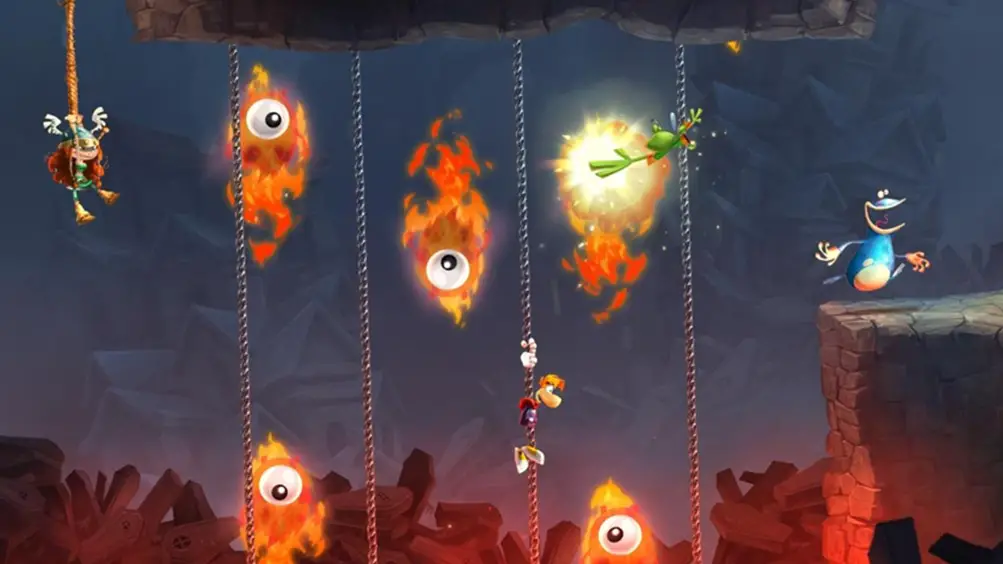
This was it, Ubisoft had successfully brought back Rayman and, after two equally amazing 2D games, fans were more than ready to finally receive the legendary Rayman 4, the first 3D entry in the series since 2003. Don’t get me wrong, all 2D Rayman titles are excellent, but fans definitely preferred the two 3D entries and were eagerly awaiting a brand-new one made with modern hardware. Unfortunately, this never ended up materializing, and, at the moment of writing, Legends is the very last mainline entry in the series Ubisoft has released. Even the Rabbids have had a way more fruitful career in the late 2010s, as they crossed over with the Mario series and starred in not one, but two critically-acclaimed Nintendo Switch exclusives: Mario + Rabbids Kingdom Battle and Mario + Rabbids Sparks of Hope. It’s not entirely clear why Ubisoft stopped making new Rayman games after Origins, but most fans commonly attribute his disappearance to his creator, Michel Ancel. It seemed like he was the person in charge of deciding whether a new Rayman game would be greenlit or not, and in 2014, he was busy with his new independent studio, Wild Sheep Studio, and its new game, Wild. Shortly after its cancellation, Michel Ancel announced his retirement from the gaming industry in 2020, claiming that he wanted to focus on working on his wildlife sanctuary instead. It’s worth pointing out that this happened around the same time French newspaper Liberatión reported that he had allegedly created a toxic work environment during his time at Ubisoft. Regardless of the motive behind his departure, it really seems like Ancel had almost complete creative control of the Rayman franchise, because Ubisoft hasn’t done much with it in over twelve years.
Of course, Rayman is not completely dead, since he appeared in a few mobile spin-offs that were inspired by Origins and Legends (like Rayman Adventures or Rayman Mini), and he even starred alongside the Rabbids in Rayman in the Phantom Show, a DLC expansion for Mario + Rabbids Sparks of Hope. Interestingly enough, Ubisoft has confirmed that it’s currently exploring the idea of making a brand-new Rayman game, and has even brought back Michel Ancel on a consulting position, so there’s still some hope left for this beloved gaming icon. But, of course, this is Ubisoft we’re talking about, a company that’s infamous for leaving multiple highly anticipated projects in “development limbo” (like Beyond Good & Evil 2 or Prince of Persia: The Sands of Time Remake), so we can’t be sure that Rayman is officially back until this hypothetical new game comes out.


